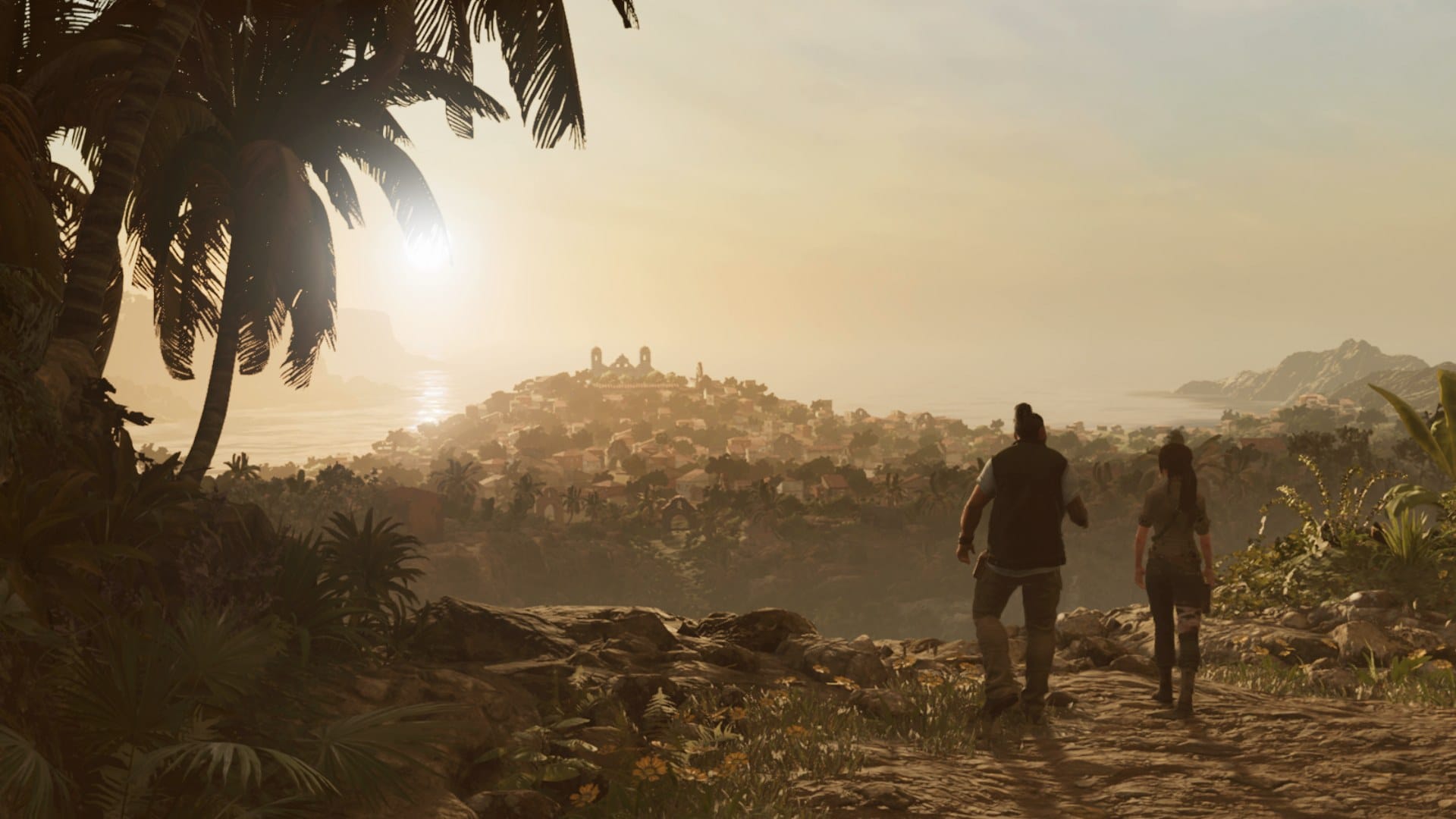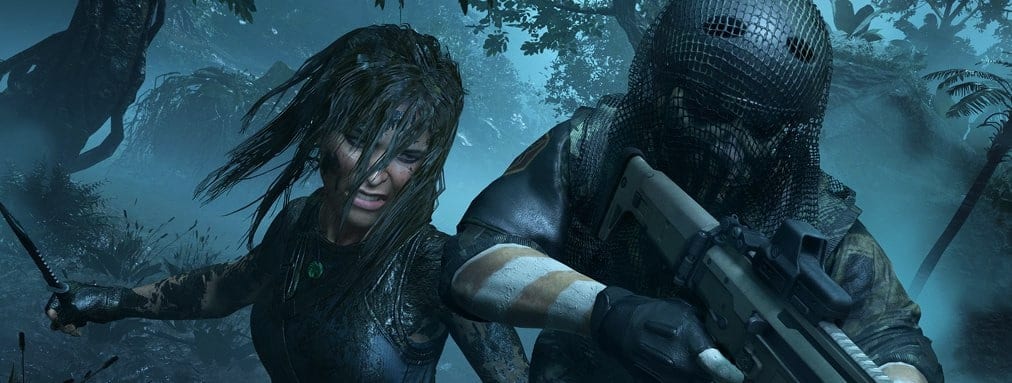For the last few days, I’ve been channelling the strong, independent woman inside of me and I’m not ashamed to admit that I’ve been enjoying it, but unfortunately, it does have its drawbacks.
Shadow of the Tomb Raider is the third instalment in the rebooted Tomb Raider franchise and the final part of what has been dubbed the ‘origin trilogy’. In this instalment, Lara must try and fix her own almighty cock-up, when her own over-eagerness to raid tombs and take things that, frankly, don’t bloody well belong to her, sets in motion a chain of events that will ultimately lead to the end of the world. Whoops.
Thankfully, to fix this massive balls-up Lara must travel to South America, and this is a setting that allows the game to show off its strong graphical prowess. The Peruvian jungle setting is absolutely beautiful and provides numerous moments where you will just sit back and admire the view. The environment is full to the brim with wildlife, and this coupled with great sound and incredible lighting effects really do make this feel like a living, breathing world. It is without a doubt that this is the most gorgeous world so far in this rebooted franchise, and possibly in any game that I’ve ever experienced.

Like the previous two entries in the series, however, the game isn’t quite as open-world as it would like you to think. You follow a predominantly linear path, branching off on occasion to pick up one of the series traditional collectible items, or possibly to explore a nearby crypt or challenge tomb, which also make welcome returns – more on that later.
One aspect of the game that does give you a more open-world setting is the Hidden City of Paititi, which ultimately acts as the main hub for you throughout the game. The city bustles with life, and here Lara can interact with NPCs to learn more about their culture, barter with merchants or take on side quests from the residents. Unfortunately, most of these side quests are a bit dull and largely pointless and seem to act more as a distraction from the main story or as a filler for game time. The city itself, however, is a joy to explore, and there are plenty of collectibles to find and grab along the way. It is when you are given this freedom to explore that you see the potential that this series would have in a truly open-world setting, it’s just a shame we only get to see it on a small scale here before we’re sent off to crack on with the main story.
Take control of a childhood, mischievous Lara running around Croft Manor
Speaking of the main story – the evil Trinity return as the main antagonists and we do encounter some new enemies along the way. The story is absolutely filled to the brim with archaeologist/historian mumbo jumbo and is at times convoluted and difficult to follow, and is definitely the weakest in the trilogy. The game offers us an interesting look further into Lara’s character as she has to deal with the guilt that accompanies the consequences of her treasure-hunting indulgences, but unfortunately it never really seems to go anywhere. Lara’s character is often inconsistent, too. One minute she looks like a bloodthirsty maniac who wants to murder you and your entire family, and the next minute she’s remorseful and unsure of herself – it all makes for a bit of a disjointed narrative. Accompanying her along the way is Lara’s best friend Jonah, who returns and plays a more prominent role. Large portions of the game focus on the relationship between Lara and Jonah—who is actually more likeable than Lara herself—and it is a delight to watch. Throughout the game, Lara and Jonah befriend several other characters that help them along their journey, but these characters are unremarkable and largely forgettable. Lara’s family story arc from the previous game continues here, and there is one particularly brilliant section of the game where you take control of a childhood, mischievous Lara running around Croft Manor unsupervised, providing one of the most memorable parts of the game.
One of the most notable differences in Shadow of the Tomb Raider compared to previous entries in the series is that combat takes a backseat for a change and there is a much stronger emphasis on platforming and actual tomb raiding. It’s at these points where the game truly excels; tombs are gorgeous, atmospheric and creepy—as you would expect them to be—particularly later on in the game when things take a bit of a horror turn. As you explore these various tombs you’ll encounter numerous puzzles along the way. These puzzle rooms present themselves to you in daunting fashion, forcing you to take a step back, observe your surroundings and take some time to think about what you need to do. All of these puzzles are enjoyable, challenging and—most importantly—never repeat themselves and are definitely one of the stronger parts of the game.
When combat does take centre stage, however, there is definitely a much stronger focus on stealth combat, a move which has clearly been intended by the developers. At this stage Lara is a fully-fledged, vicious killing machine and she takes down enemies in all manner of brutal ways; from dragging enemies underwater and breaking their neck to leaping out from foliage and stabbing them with her climbing axe – these stealth takedowns are made easier by a Survival Instincts system that allows you to see whether your victims are in sight of other enemies or not (yellow means they aren’t in sight, red means they are), and groups of enemies do tend to split up and leave themselves isolated, giving you easy-pickings as if you were the serial killer in a teen horror movie. Lara now has the ability to cover herself in mud to allow her to conceal herself against mud-covered walls, making it easier for her to move around the map undetected and get into better vantage points to take down enemies without being spotted. These stealth sections are great – there is something really enjoyable and satisfying about creeping around the map, taking down enemy soldiers one at a time and hearing the panic in the voices of your next victims as their numbers dwindle down.

Because of this strong emphasis on stealth, I barely drew a weapon for the first half of the game, relying strongly on stealth takedowns or maybe my trusty bow and arrow in extreme circumstances. It isn’t until about the mid-way point of the game when a new enemy is introduced that you need to rely more on your weapons and guns become a bit of a necessity. Sadly, when you start to reach for your weapons one of the games main blemishes starts to show. Shooting, although solid, does feel slightly sloppy and outdated, and it’s particularly difficult to aim at enemies when they get up close to you. This means that a lot of encounters break down into enemies chasing you around the map Benny Hill style while you frantically try to Quick Heal and build up enough distance between them and you so that you can take them down easily.
Gunplay that hasn’t evolved one bit since the previous entry in the series
This is gunplay that hasn’t evolved one bit since the previous entry in the series, and that’s a criticism that can be aimed at a lot of the games mechanics. For the large part, all of the weapons and items that you use will be the same ones that you’ve used for this whole trilogy, and the collectible system hasn’t changed either. You’ll still stop at base camps and use gathered resources to upgrade your weapon, and there’s still a skill point system, albeit this time in the form of a skill tree (that mostly contains all of the same skills as before). I have to admit that I rarely felt like upgrading my weapons or unlocking new skills was having any noticeable effect on gameplay, with the possible exception of Caimans Breath which allows Lara to breath underwater for longer.
Shadow of the Tomb Raider reintroduces a revamped swimming mechanic to the series and you do run out of breath relatively quickly, so it’s important that this ability is unlocked as soon as possible. Swimming sections belong in Tomb Raider games and they’re very welcome here, other than sections that see Lara having to hide in seaweed to avoid being eaten alive by Piranhas, which act as an instadeath-on-sight enemy that gets tedious rather quickly.
Unfortunately outside of these swimming sections and the Paititi sections, the game hasn’t really evolved from the previous entry, and while there will always be the argument of “if it ain’t broke, don’t fix it”, I personally feel that the final chapter in a trilogy needs to innovate and evolve a bit more. The game still relies heavily on scripted set pieces and on-rails action sequences, and while these are always impressive and exciting, they’re nothing that we haven’t seen a hundred times before in this very series.
Ultimately, Shadow of the Tomb Raider’s biggest mistake is simply playing it too safe, and while that doesn’t make for a bad game – in fact, it makes for a particularly good game – it is completely fair to expect it to have done a little bit more rather than just re-use existing game mechanics in a new setting; and while that setting may well be absolutely gorgeous and (once again) quite possibly the best I’ve ever seen, it’s bland, clichéd story and forgettable characters detracts from it.
The games most memorable moments often come away from the main story
Indeed, Shadow of the Tomb Raider is at it’s brilliant best when it simply lets us do what we signed up for – platform, raid tombs and solve puzzles. The games most memorable moments often come away from the main story, when you’re on your own, with no enemies to face in optional Challenge Tombs. What this all ultimately means is that Shadow of the Tomb Raider is an enjoyable yet slightly disappointing end to this origin trilogy, largely in part due to its poor story and its reluctance to try anything new. Despite this, I did still enjoy my time with the game, particularly its emphasis on puzzling and stealth combat. The game is still absolutely worth a purchase—particularly if you’re already a fan of the series—and it will give you a solid 15 hours of gameplay if you’re only interested in the main story, or a possible 25 hours if you’re a bit of a completionist.
Now that this origin trilogy is over (albeit in slightly anticlimactic fashion) I’m interested to see where the series—and Lara’s character—goes from here. I’ve got my fingers crossed for a more open world that we can explore more freely, with the strong emphasis on tomb raiding and puzzling continuing from this game, and hopefully some enhanced and polished gunplay, possibly including the introduction of Lara’s iconic dual-wielding pistols. And, of course, I still hope and pray for the day when we can once again lock the butler in the fridge.
